インディジナス・ナレッジ&ウィズダム賞
このアワードは、古くから伝わる知識と知恵がリジェネレーション(再生)の取り組みと人々の在り方にもたらす影響を評価し、称賛し、探求することを目的としています。
この賞は先住民族の知識や叡智を知り、称えることを目的にした賞です。(歴史的にも、今日でも)抑圧的な植民地的構造や家父長制的構造によって形成された世界において、伝統的および生態学的な知識や、先祖代々受け継がれてきた自然をベースとする先住民的実践の必要性や妥当性を称えるのがこの賞です。
2025 受賞者
インディジナス・ナレッジ&ウィズダム賞(Be The Earth FoundationとSavitri Trustによる資金提供額20,000ポンド = 約390万円 )は3つの団体に授与されました。
受賞者およびその他のファイナリストのリストは以下をご覧ください。
勝者
Assentamento Terra Vista
土地へのアクセスを求める闘争はブラジルの歴史において一貫して続いており、最初に起きた先住民による反乱から、土地を持たない労働者たちの運動(Landless Workers’ Movement: MST)に至るまで、様々な形を取ってきました。1980年代以降、農地改革を求める闘争は勢いを増し、MSTは土地の選挙や社会的正義の擁護運動をけん引してきました。100万名以上ものメンバーで構成されるMSTはラテンアメリカ最大の社会運動であり、ブラジルの政治においても重要な役割を果たしています。
バイ―ア州アラタカのTerra Vista集落での一件はMSTにとって歴史的な成果となりました。MSTは五度の立ち退きを余儀なくされ、現地の入植者や土地の所有者からの反対を受けた後、1994年に社会的目的のために土地を占拠、確保しました。2000年、Terra Vistaはアグロエコロジーへの転換を始め、土地を再森林化し、化学物質の投入を廃止し、カカオを用いたカブルカシステムのアグロフォレストリーといった再生可能な農業実践を採用しました。その結果、アリアンサ川の河岸林の92%と泉の80%が回復し、地域の生態系が強化され、集落では飢餓が根絶されました。
こういった重要な成果にも関わらず、集落はリソースや技術支援、十分な教育の不足によって、アグロエコロジー活用の拡大・深化にあたって課題に直面しています。
先住民およびキロンボ(quilombola)の原則に従い、地域の再生はそこに住むコミュニティの再生と切り離せないものだと考えられています。工業的農業の論理や保護主義的な環境保護の論理に挑戦し、生態系の再生や人間の参加、そして持続可能な食料生産を統合しているのがアグロフォレストリーです。
- 2025
- Indigenous Knowledge and Wisdom Award
プロジェクト情報
- Portuguese
- https://teiadospovos.org/
- https://www.facebook.com/ass.terravista.atv/?locale=pt_BR
- https://www.instagram.com/ass.terravista/?hl=en
- Terra Vista Settlement, Avenida Beira Rio, s/n Arataca BA 45695000 Brazil
勝者
Organizacion Ecologica Sol y Verde
Organizacion Ecologica Sol y Verdeはグアテマラ北部のマヤ生物圏保存地域(Maya Biosphere Reserve)の端に位置する農村および先住民の文脈で活動する、再生的かつ教育的な草の根的非営利団体です。
Sol y Verdeのミッションは気候正義を支持し、コミュニティのレジリエンスを高め、先住民文化の保存と祝福を促進することを通じて、危機に瀕した生態系を保護および修復することです。強制移住や気候変動の影響を受けた農村部における立場の弱いコミュニティ、特に女性や若者、先住民グループの食料主権を確保するべく、土地利用にまつわる解決策やスチュワードシップに重点を置いています。
これまでの活動内容は以下の通りです:
- 自然再生とアグロエコロジー:ジャングルの風景を再森林化し、絶滅危惧種の植物を増殖・栽培し、現地の家族が再生型農業実践に移行できるよう支援。特に、土壌再生とアグロフォレストリー(農林業)を通じた実践に取り組んでいます。
- バイオ建築(bioconstruction)による地域作り:地域の人々と協力し、持続可能でアクセシビリティの高い方法でインフラを改善し、自然素材を再生的に利用して、現地の生態学的および経済的課題に対応するための施設を整備。Sol y Verdeはほぼ独占的に、多くの場合に廃棄物とみなされがちな現地由来、且つバイオベースの素材を使用しています。
- コミュニティ支援と福祉:Sol y Verdeは、コミュニティの参加が長期的な変革を約束させる鍵であると信じています。女性や子どもたちに新しい再生的スキルを学ぶ機会を提供し、土地管理や先住民の医療に関する知識を交換する、安全で支援的なスペースを提供しています。これは経済的自立を促進し、地域社会の強固な絆を発展させ、帰属意識を強化することにもつながっています。
- 2025
- Indigenous Knowledge and Wisdom Award
プロジェクト情報
- Spanish and English
- https://solyverde.org/
- https://www.facebook.com/orgsolyverde/
- https://www.instagram.com/solyverdeorg/
- organizacionsolyverde@gmail.com
- Aldea Paxcaman Flores Petén, Guatemala
勝者
The Cultural Conservancy (TCC)
The Cultural Conservancy(TCC)はカリフォルニア州サンフランシスコを拠点とする先住民主導の非営利団体です。1985年に設立され、代々受け継がれてきた知識や実践を先住民の土地で直接的に適用することで、先住民文化を守り、復興させることをミッションに掲げています。
TCCは現地および世界中の先住民(Native/Indigenous)コミュニティと協力しており、プロジェクトはコミュニティの要望に基づいて形成され、伝統的知識の保持者や土地管理の実践者、コミュニティリーダーで構成される先住民諮問委員会(Native Advisory Council) の指導の下、コミュニティ主導で進められます。言語復興や伝統的な彫刻に関するプロジェクトから、先住民の農学や伝統的な土地管理手法に至るまで、TCCの活動において重要なのは先住民が土地や水と結んでいる神聖な関係性を認め、この関係が心身、そしてコミュニティの健康にとって重要だと認めることです。
TCCは「”タートルアイランド”(Turtle Island:一般に北米大陸を指す)」に深く根差しており、ハワイや中央・南アメリカ、モアナ(Moana:太平洋を指す)とも強いつながりを持っています。また、カリフォルニア州の先住民コミュニティへの支援を強化しており、公認部族/主権国家、非公認部族、先住民団体、都市部や部族間における先住民コミュニティなどもこれに含まれます。先住民の若者や年長者たちへのコミットメントも高め、世代間での知識の共有や交換を推進しています。
代表的なプログラムである先住民食文化プログラム(Native Foodways Programme)と、土地プログラムであるHeron Shadowを通じて、TCCは以下の取り組みを進めています:
- 文化的に根ざした、安全な居場所の提供
- 植え付け、収穫、加工、分配、調理、種子保存を通じた)健康で文化的に適切な食料を栽培するためのリソースに対する、アクセスの提供
- 食料の入手可能性、土地の喪失、身体的および精神的、文化的健康問題に苦しむ人々を対象とした、コミュニティ主導の変革の促進
- 2025
- Indigenous Knowledge and Wisdom Award
プロジェクト情報
- English
- https://www.nativeland.org/
- https://www.facebook.com/TheCulturalConservancy/
- https://twitter.com/TCCNativeland
- https://www.instagram.com/culturalconservancy/?hl=en
- tcc@nativeland.org
- P.O. Box 29044 Presidio of San Francisco CA 94129 United States
こちらも候補に挙がっています
Bari Wesna
2015年2月に設立されたBari Wesnaは、勢いを増す森林伐採やアマゾン先住民の生活に迫る脅威に対処するべく、誕生しました。持続可能性とジェンダーエクイティに焦点を当て、先祖伝来の知識と現代の知識を統合することによって現地の生態系を修復するというビジョンを掲げています。
この団体はウカヤリ、ワヌコ、ロレートの領土を含むペルー・アマゾンの、豊かな生物多様性を誇る自然環境で活動しています。現地の先住民コミュニティは森林伐採や天然資源の喪失、気候変動の影響といった脅威に直面しています。
Bari Wesnaはシピボ=コニボ族、アシャニンカ族、ヤネシャ族と密に協力し、彼らの土地や共同林管理への積極的な参加をコミュニティに促しています。また、自然環境を傷つけること無くコミュニティの福祉と発展に貢献しながら、コミュニティに収入をもたらす持続可能な経済活動を推進しています。
設立以来、Bari Wesnaは持続可能な森林プログラム(Sustainable Forests Programme)で成功を収め、劣化した土地の森林再生や土地のガバナンス強化を推進してきました。また、先住民コミュニティに対して持続可能な資源管理に関するトレーニングを提供し、現地や国際組織との重要なパートナーシップを築いてきました。
- 2025
- Indigenous Knowledge and Wisdom Award
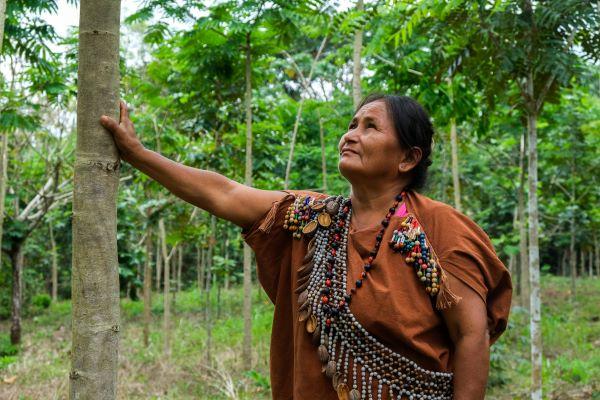
プロジェクト情報
- Spanish
- https://bariwesna.org/
- https://www.facebook.com/bariwesna
- https://x.com/bariwesna
- https://www.instagram.com/bariwesna/
- Jr. Lirio Garcia Mz3 Lt14 - Husares del Perú - Yarinacocha Pucallpa Peru / Province of Coronel Portillo / Ucayali 25000 Peru
Colectivo de Mujeres del Gran Chaco Americano
Colectivo de Mujeres del Gran Chaco Americanoは情報技術や異文化コミュニケーション、接続性やつながりを活用し、女性達が互いに学び合い、知識の循環を促進させる場を保有することで、土地に住む女性たちを支援することを目指しています。
この団体はボリビアとパラグアイに広がる、物理的および経済的、かつ社会文化的多様性の豊かなチャコ(American Chaco)地域で活動しており、交通や移動に関する問題、限られた通信および接続といった課題に直面しています。
現地では小規模な農村や先住民の女性生産者(主にグアラニ族(Guaraní )やウィチ(Wichis)族)が、農業生産や手工芸を家族単位で行っています。彼女たちはしばしば水不足に陥り、土地の権利が安定しておらず、環境的な脅威に直面し、移住を余儀なくされています。
時が経つにつれ、知識や経験を交換できる場が現れ、地理的な境界を越えて傾聴することや対話する場が設けられてきました。
Colectivo de Mujeres del Gran Chaco Americanoはこういった場をさらに強化し、女性達の間での交流や経験の循環を促進させることを目指しています。
以下の目的を達成するべく、この団体は定期的に三国間会議の開催を目指しています:
- 現地の知識循環を支援する戦略の策定
- 経験の交換
- 団体メンバーの政治的訓練
- チャコ地域に共通する問題に直面した際のジョイントアクション
- 上記の全てを各コミュニティの違いを尊重し、包括しながら行うこと
- 2025
- Indigenous Knowledge and Wisdom Award
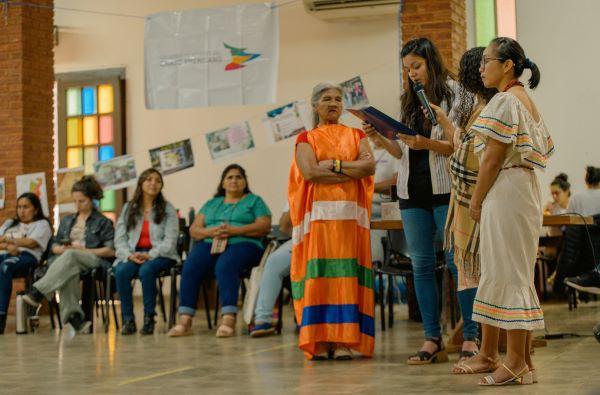
プロジェクト情報
- Spanish
- https://colectivomujereschaco.com/
- https://www.facebook.com/colectivomujeresdelchacoamericano
- https://x.com/ColectivoGran
- https://www.instagram.com/colectivodemujeresgranchaco
- Paraje Rural Los Socavones Department Tulumba Cordoba 5244 Argentina
Colectivo Suumil Móokt’áan
Colectivo Suumil Móokt’áanはメキシコ、ユカタン州シナンチェに位置するマヤ族の家族集団です。エネケン(アガヴェ)の単一栽培によって荒廃し、人々が他の土地へ移住するのに伴い田園地帯が大規模に放棄された沿岸地域にこの集団は住んでいます。
2020年に設立されたこの集団は、若者がコミュニティに留まり、マヤ文化に沿った意義のある生活を築くことができる環境づくりを目指しています。団体はコロナ禍の最中、マヤ式の太陽光発電プロジェクトを始動させました。このプロジェクトは世代を超えた学びの場をもたらし、マヤ人としての生き方を再認識するための空間となっています。
その後、Colectivo Suumil Móokt’áanは学びの機会を提供する様々な空間や取り組みを創出しました。以下のような活動が例として挙げられます:
- 100種類の在来種の種子を保管するシードハウス、苗床、野菜畑。
- 2つのエコロジカルな乾式トイレに加え、フェロセメントで作られ、野菜や植物に水やりが可能な20,000リットルの雨水貯留システム。
- 知識や味を分かち合う共同キッチン。
- 様々な会議や集まり、ワークショップが開催される多目的パラパ(椰子葺屋根の小屋)。
- また、1ヘクタールの土地で約200種類の様々な植物が植えられ、シントロピック・アグロフォレストリーシステムを推進しています。
これらの空間は参加者の祖父母がかつて暮らしていた方法が現代でも有効であることを強調し、土地のケアや健康、食の主権にまつわる日常的かつ実践的で確かに根付いた知識を、世代を超えて学ぶことを可能にしています。
- 2025
- Indigenous Knowledge and Wisdom Award
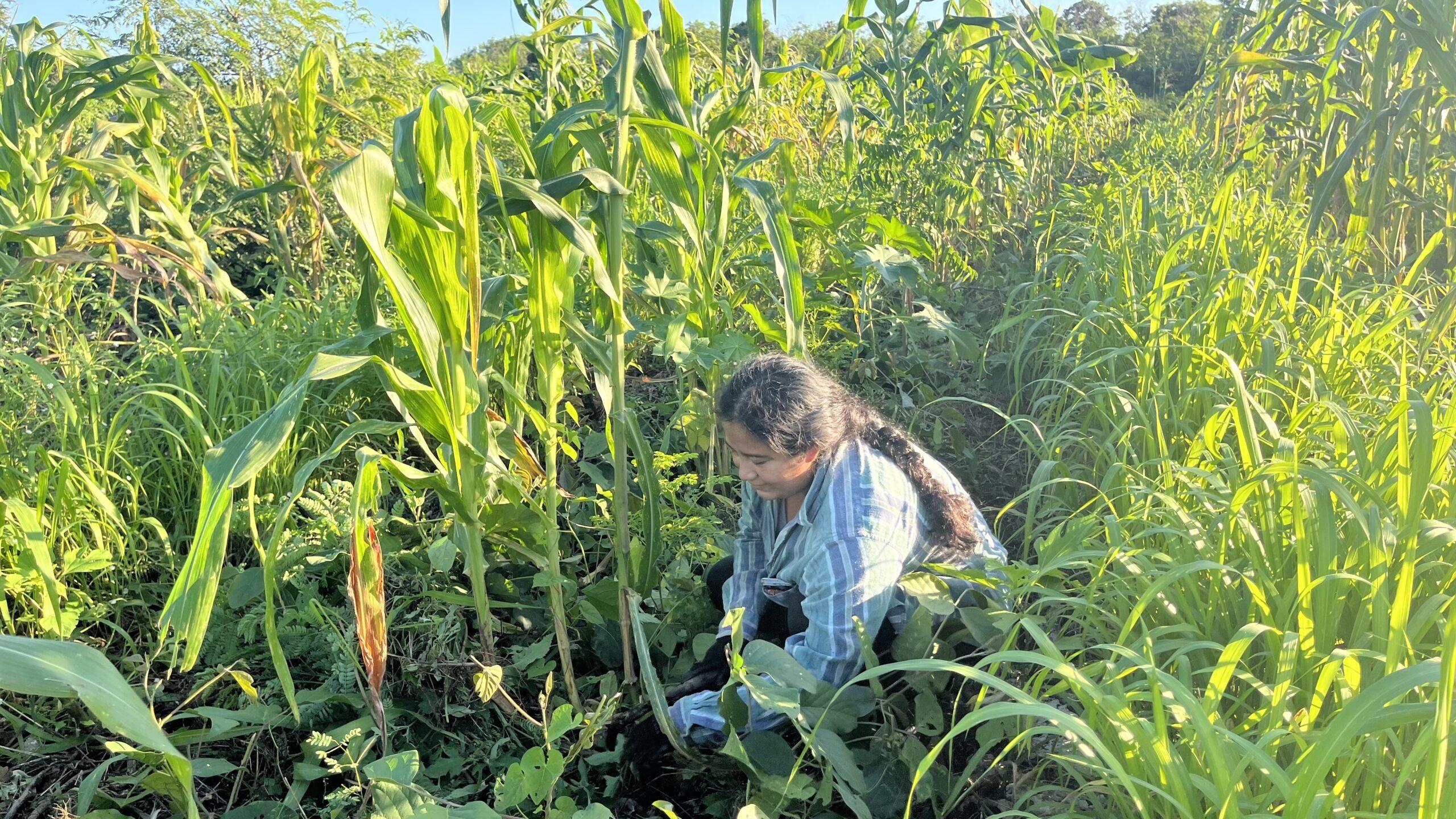
プロジェクト情報
- Spanish
- https://suumilmooktaan.org/
- https://www.facebook.com/ColectivoSuumil/
- https://www.instagram.com/colectivosuumil/
- Street, 12 #100 Sinanché, Yucatán, Mexico
Indigenous Women and Girls Initiative
Indigenous Women and Girls Initiative(IWGI)はケニアのBaringo Countyにおける先住民の牧畜民へのサポートおよびエンパワメントを目的としたコミュニティベースの団体です。
この団体はアグロエコロジーとパーマカルチャーを通じて、Baringoとその周辺地域の先住民の生計を改善し、気候変動に対する地域社会のレジリエンスを強化することを目指しています。また、持続可能な実践環境を育み、ジェンダー平等を提唱することで、先住民の女性や子女が尊厳と尊敬をもって繁栄できる世界の創出を目指しています。
主な活動内容は以下の通りです:
- アグロエコロジーのトレーニング:持続可能な農業方法を適用するための知識やスキルをコミュニティメンバーに提供。
- コミュニティガーデン:食料生産、栄養、生物多様性保全の推進。
- 女性のエンパワメント:リーダーシップトレーニングや職業技能開発訓練、金融サービスへのアクセスを提供。
- 気候変動適応:干ばつに強い作物品種や雨水貯留技術など、気候変動への適応戦略の構築にまつわる支援をコミュニティに提供。
- 政策提言:先住民の権利、ジェンダー平等、持続可能な開発を支援する政策を提案。
IWGIはこれまでに87名以上の農業リーダーと彼らのコミュニティに対してアグロエコロジー実践に関するトレーニングを提供し、30のコミュニティガーデンと3つのアグロフォレストリーセンターを設立しました。
- 2025
- Indigenous Knowledge and Wisdom Award
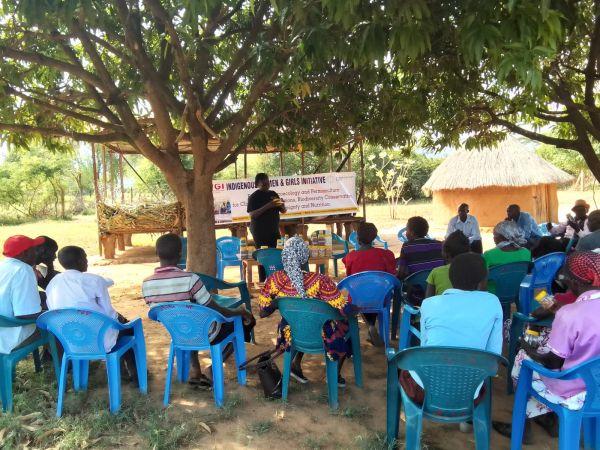
プロジェクト情報
- English
- https://iwgi.or.ke/
- https://www.facebook.com/NetworkofIndig1?_rdc=1&_rdr
- https://x.com/NetworkofIndig1
- https://ke.linkedin.com/in/indigenous-women-and-girls-initiative-a28855279
- 151 Marigat Rift Valley 30403 Kenya
Indimbo
”Indimbo”とはグアラニー語で「糸」を意味する言葉です。ボリビアのIndimbo Cooperativeの先住民女性たちは、自分たちのコミュニティや文化、森林、そして”yandereko(自然と調和して生きるグアラニー族の生き方)”を再生するために糸を紡いでいます。
糸はIndimboの女性たちが手作りするベルトやバッグ、シャツ、枕カバー、ジュエリーなどの家庭用製品を結ぶ存在です。糸で織られた品々にはグアラニーの歴史や価値観が織り込まれ、デザインには星や花、魚や鳥、その他の動物が描かれることでグアラニーの文化や神話が伝えられています。
2022年、グアラニー族の女性10名がこの協同組合を立ち上げ、現在では6つの先住民コミュニティから100名ほどの女性が参加しています。Indimboはグアラニー族の女性とその子供たちの生活の質を向上させるとともに、彼女たちが生産する手工芸品の材料や食料、エネルギー、そしてインスピレーションの源である森林を守る、生物経済的な取り組みです。
グアラニー族の人々は乾燥したチャコ(Chaco)の森や、パラペティ川(現地では”祖母”を意味するYande Yariの名で呼ばれる)とそこに営まれるあらゆる生態系、そして糸も生きた存在だと考えており、最も甚大な脅威から守るべき存在だと考えています。実際、Yande Yariは最終的には自然本来の状態まで修復されるべき状態だとされています。そのため、Indimboの活動の重要な一環としてパラペティ川沿い約10,000エーカーの森林の修復および保全が進められています。
財政的自立を目指すなか、この協同組合はNatura Bolivia Foundation およびCharagua lyambae自治先住民政府から技術的および財政的支援を受けています。
- 2025
- Indigenous Knowledge and Wisdom Award
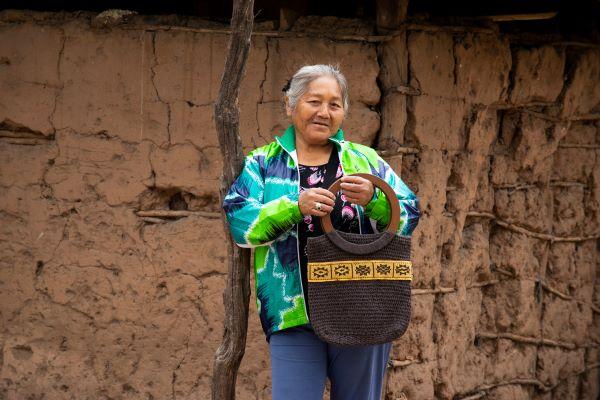
プロジェクト情報
- English
- https://www.naturabolivia.org/
- https://www.facebook.com/fundacionnaturabolivia
- https://x.com/naturabolivia
- https://www.instagram.com/fundacionnaturabolivia
- mteresavargas@naturabolivia.org
- Calle Río Totaitu, Las Palmas, Santa Cruz de la Sierra, Bolivia
Meli Bees Network
The Meli Bees Networkはアマゾン熱帯雨林での森林伐採や環境劣化の壊滅的影響に立ち向かうという切実な必要性から生まれた、先住民主導の団体です。
Meliはドイツに拠点を置き、ブラジルからドイツに移住したオマグア族(Omágua)の創設者によって設立されました。創設から4年を迎えた現在、このネットワークはブラジル全土、さらにスペイン語圏のラテンアメリカにおけるコミュニティにまで広がり、ブラジルやペルー、メキシコに最も活発なコミュニティが存在しています。Meliは先住民と現地のコミュニティが自らの自治を取り戻し、土地に対するスチュワードシップ(管理責任)を強化することに加え、気候正義とレジリエンスの枠組みのなかで彼らの声を世界中に広めることを中心に据えて活動しています。Meliは土地と最も深くつながっている人々こそが、人類が直面している環境危機に対する解決策を備えていると信じています。
現在、活動の影響は100近くの先住民および現地のコミュニティに届いており、コミュニティのリーダーたちは資金調達または能力開発の機会などの重要なリソースにアクセスでき、領土を守ることだけに留まらず、持続可能な土地管理を強化し、生活向上を目指すプロジェクトを統率する準備までもが整っている状態です。これらの活動を通じて、Meliは現地規模の知識やアクションを世界的な影響力へと変化させる活発なネットワークを築いてきました。
各コミュニティにおいて、ネットワークは土地との深い結びつきのなかに強みを見出しています。Meliは自然と調和して生きるというのは単なる実現可能なこととしてではなく、欠かすことのできない重要な生き方であると世界に示しています。あらゆる木も、あらゆる植物も、私たち人間が何者であるかを反映していると信じているのです。
- 2025
- Indigenous Knowledge and Wisdom Award
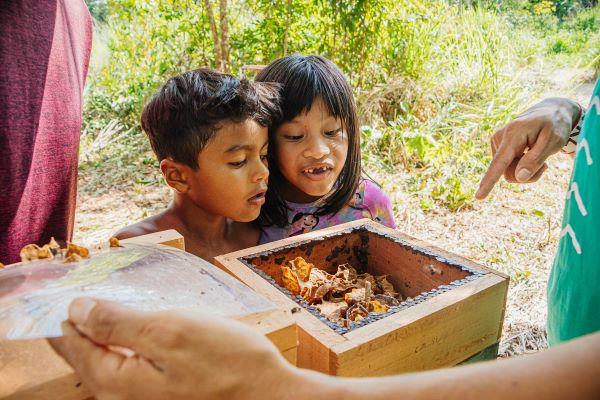
プロジェクト情報
- English and German
- https://www.meli-bees.org/
- https://www.facebook.com/beesmeli
- https://x.com/meli_bees
- https://www.instagram.com/meli_bees_
- Im Grund 26 Ochsenhausen Baden-Württemberg 88416 Germany
Naga Indigenous Peoples Food Foundation
When the founder of Naga Indigenous Peoples Food Foundation moved away from their home in Manipur in search of better opportunities, they tried to recreate their mother’s healing broth. They bought the same ingredients from the market, but it never tasted the same, not even close. They later conducted research that compared ingredients and discovered that the rich biodiversity of the Indo-Burma Biodiversity Hotspot, home to the Naga Indigenous people, was the key to that distinct flavor.
This realisation inspired them to preserve this sustainable food system and to establish Naga Indigenous Peoples Food Foundation, with the aim of economically empowering indigenous farmers who often do not receive fair compensation for their produce.
The foundation involves the Tangkhul Naga Peoples and aims to document Indigenous knowledge, raise awareness, and collaborate with local communities, knowledge centres, and government bodies to empower food producers while ensuring their practices are respected and valued.
Over the next five years it seeks to develop a network of 10,000 empowered farmers, serving as a sustainable business model for sustainable food systems. It aims to represent indigenous peoples in regional, national, and international advocacy efforts, highlighting the importance of biodiversity and indigenous knowledge in food production.
- 2025
- Indigenous Knowledge and Wisdom Award
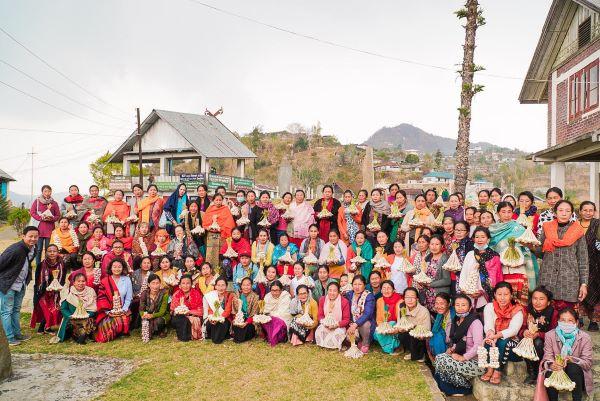
プロジェクト情報
- 472 khuilungtang dungrei ukhrul manipur dungrei Manipur 795142 India
The Mesoamerican Permaculture Institute
The Mesoamerican Permaculture Institute (IMAP) was founded in 2000 by a group of Maya Kaqchikel community members from San Lucas Tolimán, along the shores of Lake Atitlán, Guatemala.
The founders were deeply concerned about the environmental and social problems that affected so many living beings around the lake. The forced imposition of monoculture cash crops threatened communities’ food sovereignty, reduced land access, and contributed to environmental degradation. These farmers knew their ancestors lived in harmony with nature, stewarding the land and caring for their communities’ food and medicinal needs with native plants. However, colonialism violently wrested those cultural, spiritual, and agricultural practices from communities.
IMAP has worked for 24 years, combining permaculture education with the recuperation and application of ancestral knowledge. It develops knowledge and skills needed to guarantee food sovereignty, community development and biodiversity. IMAP has supported 15,000+ small farmers to produce, harvest, and use native plants and seeds like amaranth and chia in polyculture plots. These plants are better adapted to local conditions and resistant to disease, fighting malnutrition and helping local people become more resilient in the face of climate change.
IMAP believes efforts to support local biodiversity must include:
- Embracing local growing traditions.
- Invigorating the rural economy.
- Preserving Indigenous cultures.
By focusing on food sovereignty – the right to produce and eat wholesome, culturally relevant food – sustainable, agroecological solutions are created that provide sustenance, promote ancestral practices, and support campesino farming based on respect for Mother Earth.
- 2025
- Indigenous Knowledge and Wisdom Award
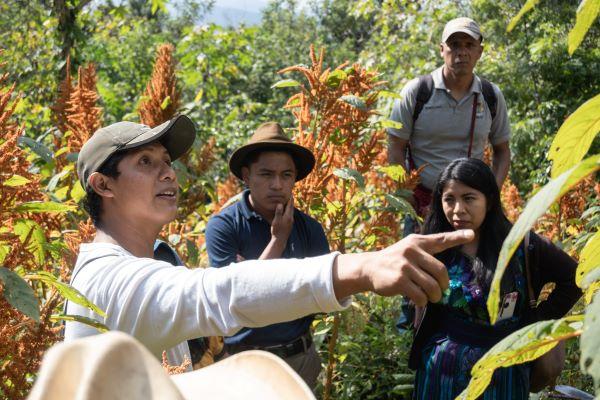
プロジェクト情報
- Spanish
- https://www.imapermacultura.org/
- https://www.facebook.com/imapermacultura
- https://www.instagram.com/imapguatemala/
- (502) 4549-0578
- imapermacultura@gmail.com
- Caserío Pachitulul, San Lucas Tolimán, Sololá, 07013, Guatemala
The Returning Indigenous Corporation
The Returning Indigenous CorporationはオーストラリアのBundjalung Countryに拠点を置く、先住民女性主導の非営利団体です。そのミッションはあらゆる人々が自分自身やコミュニティ、そして国や土地との本来あるべき関係を取り戻し、私たち自身と地球を癒すことです。
この団体は創設者たちが既に運営している、脱植民地化された文化的およびウェルビーイングに関するイベントをより深化、拡大させるために設立され、先住民文化のファシリテーターがBundjalung Countryのリジェネレーションや社会的レジリエンスにまつわる運動を主導する機会を創出しています。
第一の目的は先住民の女性、年長者、そしてその家族がBundjalung Countryとつながり、文化的知識を認められ、報酬を得ることができ、健康とウェルビーイングが改善される機会とサポートを提供することです。第二の目的は、先住民族と非先住民族との間に深いつながりを築き、民族に伝わる古代の知恵や文化からあらゆる人々に学びを得てもらうことです。
The Return Indigenous Corporationは自然療法の原則やヘルス・リトリート、ファミリーサポートサービスに焦点を当てた7つのプログラムを地域全体で提供しています。先住民専用のプログラムでは癒しと文化的つながりにまつわる安全な場を提供し、オープンプログラムでは先住民と非先住民の人々の間で深い学びやつながり、癒しを創出します。
この団体は気候変動が既にBundjalung Countryの先住民に不均衡な影響を及ぼしていることを認識しており、あらゆる人々が土地や海、健康、ウェルビーイングと再度結び付くことで、誰もが共に繁栄し、強靭で再生可能なコミュニティを創り上げることができると信じています。
- 2025
- Indigenous Knowledge and Wisdom Award
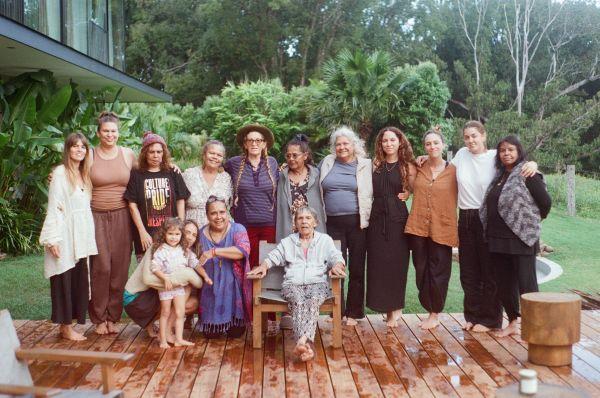
プロジェクト情報
- English and Bundjalung
- https://www.thereturning.com.au/
- https://www.facebook.com/thereturning
- https://www.instagram.com/the_returning_/
- 51-53 Burringbar Street Mullumbimby NSW 2482 Australia
Uru Uru Team
The Uru Uru Team is an indigenous women-led group from the Aymara community in Bolivia. It is dedicated to the restoration of ecosystems through a blend of traditional knowledge, community empowerment and scientific innovation.
The team was founded in 2021 to act as a steward of Lake Uru Uru, a vital water source that has faced significant ecological degradation due to pollution, climate change, and overexploitation of resources. The team collaborates closely with local indigenous communities to implement nature-based solutions, particularly through restoration of native aquatic plants, which play a critical role in water purification and maintaining the lake’s ecosystem.
Bolivia’s Andean highlands, where the team operates, presents a challenging physical environment characterised by extreme weather and fluctuating water levels due to climate change. The social context includes a deep connection between indigenous communities and their land, but these communities often face marginalisation and lack access to resources and opportunities. Economically, the region is characterised by poverty, with many families relying on agriculture and fishing for their livelihoods, both of which are threatened by the lake’s degradation.
Since inception, it has:
- Initiated the restoration of the lake’s ecosystem by planting and monitoring native aquatic plants like Totora, which purified water and restored habitats.
- Partnered with schools to educate youth about environmental stewardship, traditional knowledge, and scientific practices, fostering a new generation of indigenous environmental leaders.
- Conducted community workshops focused on sustainable agriculture, helping local farmers integrate eco-friendly practices.
- 2025
- Indigenous Knowledge and Wisdom Award
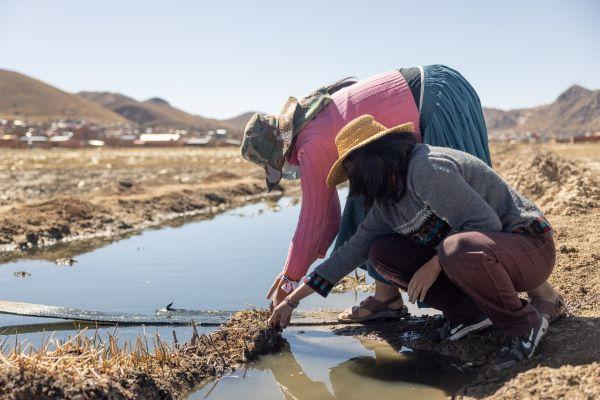
プロジェクト情報
- Spanish
- https://www.facebook.com/UruUru01/
- https://www.instagram.com/uru_uru_team
- (591) 6959-3336
- 2023uru@gmail.com
- Final Av Dehene s/n Oruro, Cercado, Bolivia